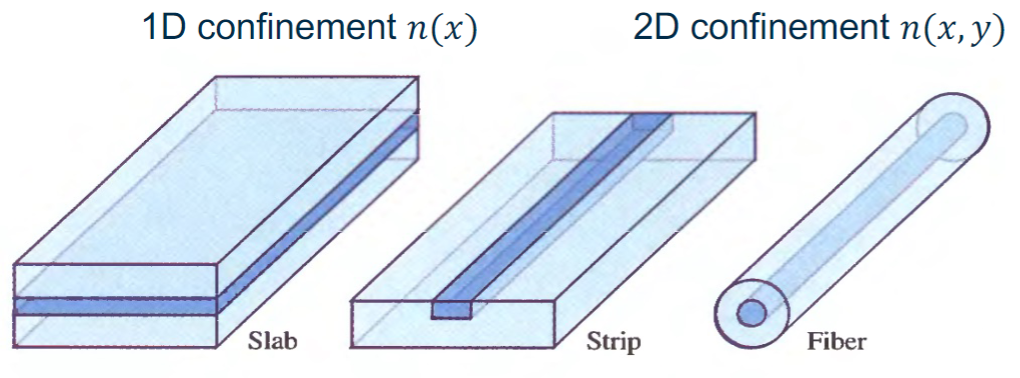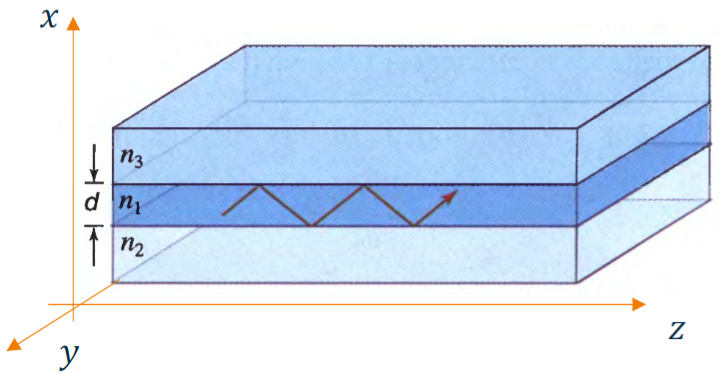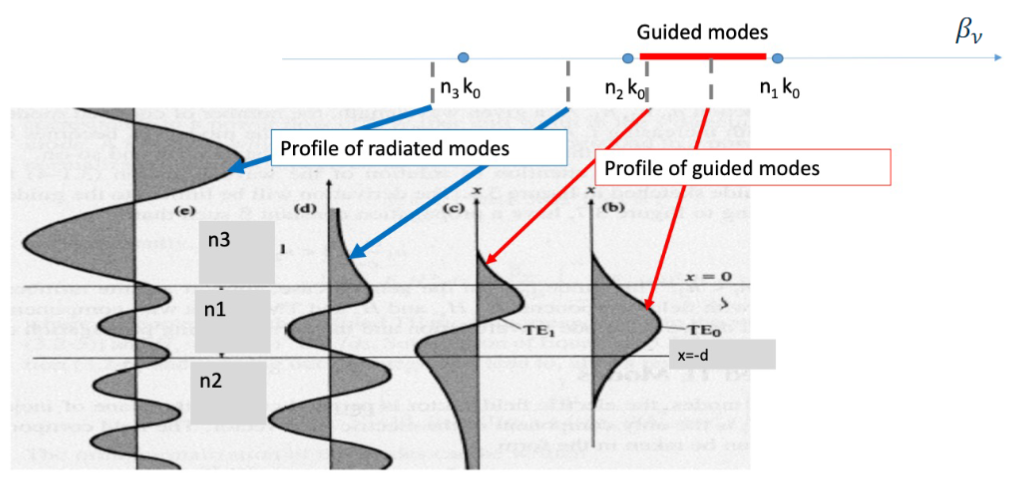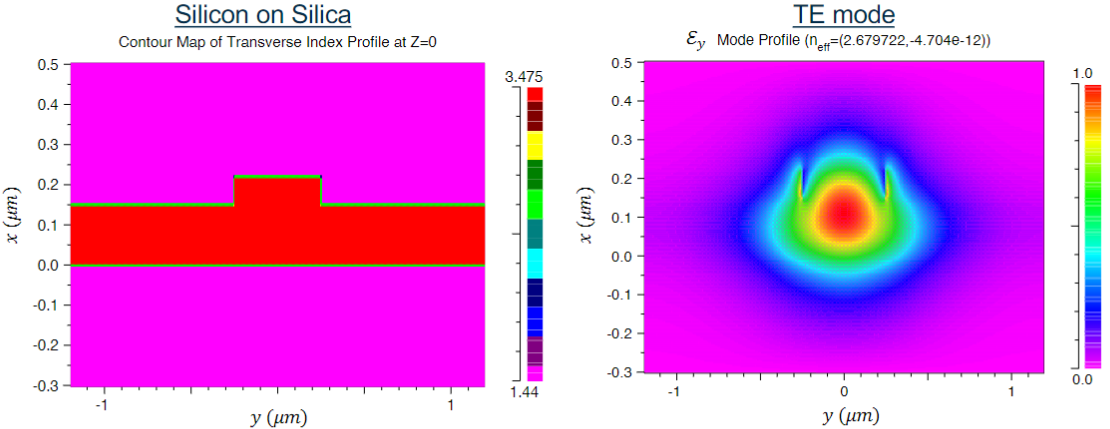Optical waveguides are devices that restrict the directions of propagation of light to 1 or 2 dimensions. We will mostly deal with planar waveguides (or slab waveguides) which, as the name suggests, allow the transmission of light in 2 directions only.

Slab waveguides
Slab waveguides are composed of three layers of materials which need to have the right optical properties to guarantee total internal reflection. In the image below we can see that we have one layer of core (refractive index
The two layers of cladding do not need to have the same the refractive index and can also be completely different materials (even air in the second case in the image above).
We will assume that the slab waveguide has infinite extension in the two directions
Transverse modes
In the following we will limit our study to transverse modes, which is to say solutions where the amplitude does not depend on the propagation direction of the wave (in blue below).
We will also study monochromatic waves (we will have one single frequency
The subscript
Will will only study the cases where the materials are linear, isotropic, homogeneous, transparent and non-magnetic. To simplify our study will will also consider

Transverse electric modes
In the transverse electric (TE) modes, we will assume that the electric field is orthogonal to the propagation direction:
Some of the parts marked as optional in the slides are omitted
Eigenvalue equation
Studying the Maxwell equations after imposing the constraint that
can be used to determine
This eigenvalue equation can be satisfied by two families of waves: guided modes (where light is confined in the core) and unguided modes (where light is not confined).
We are only interested in the study of guided modes because we want to use the waveguide as a way to force the light along a specified path. Since we are studying a real case, we have to remember that we are not in the ideal case of total internal reflection but we will have some amount of “leakage” of the waves in the cladding, for this reason we talk about evanescent waves, which is to say that their intensity vanishes for
Boundary conditions
Before proceeding we need to remember that we have to impose boundary conditions at the interfaces between the materials, which is to say impose the continuity of the fields in
Guided modes
By solving equation
furthermore we find that we have discrete solutions for different values of

We can also notice that, independently of the mode number

Among all the possible modes we can recognize the fundamental mode (
Consequences
One important consequence of this result is that, since the TE modes form a complete and orthogonal functional set, i.e. a basis, any TE electric field can be represented as a linear superposition of TE modes.
todo explain the slide
Examples
todo explain the slide
Two dimensional waveguides

In 2D waveguides light is confined in two dimensions (see image at the top of the page). In this case we cannot solve the Maxwell equations analytically as we did for the slab waveguides but we have to use numerical methods such as the Finite Elements method or the Effective Refractive Index method.
The image below shows an example of such analysis. We can clearly see that the waveguide successfully accomplishes the goal of confining light in a limited region but we can also see that this confinement is not sharp.

Parameters
In the following we will study some of the properties that characterize 2D waveguides.
Chromatic dispersion
Chromatic dispersion is strictly related to the fact that the group velocity dispersion (defined below) depends of the wavelength of the light travelling in the medium. This effect results in the broadening of the initial input.
The group velocity is defined as follows:
And can be intuitively seen as the velocity of the “peak” of the wave (for example when thinking about a gaussian).
Since
todo what is

todo write the last parts
